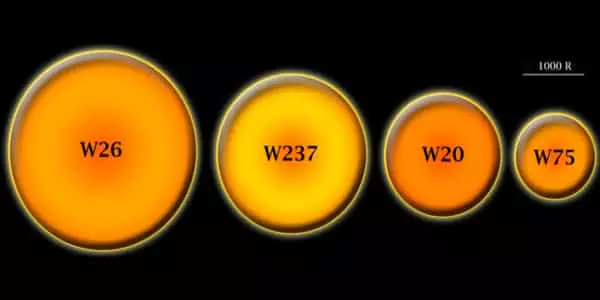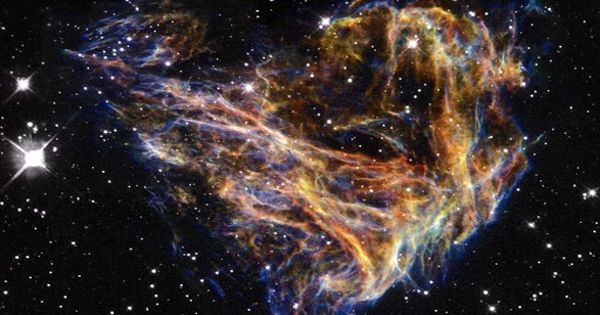Westerlund 1-237, also known as Wd 1-237, is a potential red supergiant (RSG) in the constellation Ara. It is one of four known red supergiants in the Westerlund 1 super star cluster, but its outlying position, spectrum, and parallax suggest it is a foreground giant. As a red supergiant, it would be one of the largest and most luminous stars known.
Physical characteristics
Westerlund 1-237 is a luminous cool supergiant that emits the majority of its energy in the infrared spectrum. It is surrounded by a radio nebula with a mass comparable to Westerlund 1-20 and Westerlund 1-26, and which is also directly comparable to VY Canis Majoris. The elliptical structure of this nebula, on the other hand, indicates that it was less affected by Westerlund 1’s cluster wind (W20 and W26 have pronounced cometary-shaped nebulae). The RSG wind’s outflow velocity is estimated to be around 30 km/s. The nebula appears to have a mass of 0.07 M☉ and a radius of approximately 0.11 parsecs. This gives a kinematic age of around 3,600 years and a time-averaged mass loss rate of 2×10-5 M☉ per year.
The star can be found in the upper right corner of the Hertzsprung-Russell diagram. The radius of Westerlund 1-237 would be 1,241 times the solar radius (R☉) with an effective temperature of 3,550 K and a bolometric luminosity of 219,000 L☉, making it larger than Jupiter’s orbit. The initial mass of W237 has been calculated to be around 28 M☉ or 32 M☉ for a non-rotating star based on its position relative to theoretical stellar evolutionary tracks.

Distance
Based on its status as a member of the Westerlund 1 star cluster, the distance to Westerlund 1-237 is estimated to be around 8,500+2000-1300 light-years or 2,600+600-400 parsecs (the elliptical shape of its nebula indicates that it might not be near the center of W1, while other RSGs like W20 and W26 are). Another, an older source claims a distance of 3,000 ±500 parsecs.
According to Westerlund’s 1987 analysis, W1-237 has a spectral type of M6+ III and is a foreground giant with a luminosity of around 1,000 L☉. W1-237 has a parallax of 1.64±0.2608 mas according to Gaia Data Release 2, implying a distance of 623+139-96 pc and a luminosity of 7,178–7,379 L☉ with a radius of 216 R. In 2020, the parallax was reduced to 0.3370 ±0.1235 mas, a much smaller value.
















